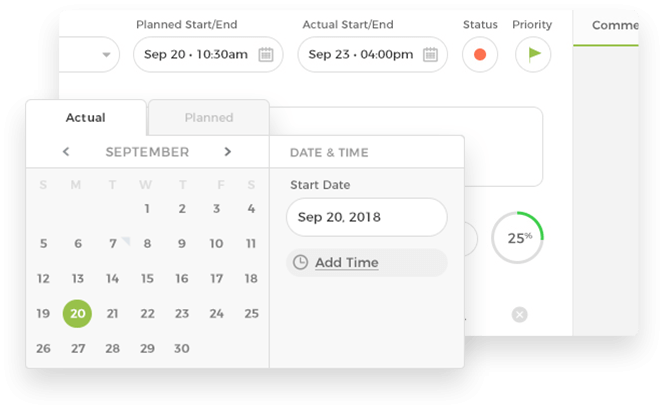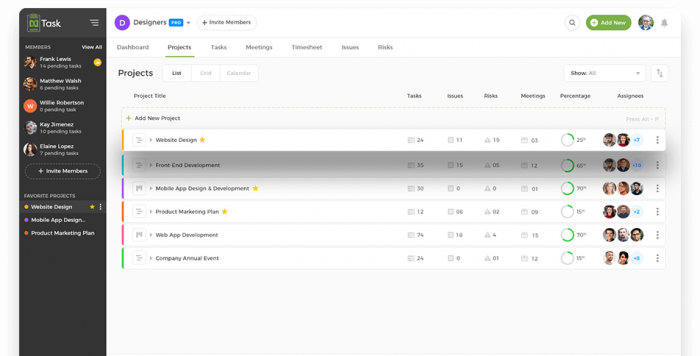Remote work and satellite offices are on the rise. And with the COVID-19 Pandemic changing the way offices and the work culture are structured you need to know how to work across time zones.
Global teams are incredibly beneficial, in fact, studies predict that by 2024, 75% of businesses that employ diverse front-line decision-makers will be able to exceed the financial targets they set.
Then why not learn how to work across time zones?
Here are the benefits you can gain from incorporating distributed teams in your business and some tips on how to work across time zones.
So, let’s get to it!
Benefits of Having Diverse Teams Situated Across the Globe
With the number of challenges that are faced in managing teams that are situated across the globe and in different time zones, the question arises why even have such teams?
There are a lot of benefits to be gained from such diverse teams and here are just a few of those advantages.
Advantage #1: You Widen Your Talent Pool

When you are open to the idea of having a diverse team and allowing employees to work remotely you open up your talent pool.
You can hire around the globe and thus have access to the best resources wherever they may be physically located.
Advantage #2: You Have Access to a Team That is Available 24/7
When you have a distributed team, you also gain time zone coverage. This means that essentially you have a team that is available and working 24/7 since at any point in time there is someone available and online.
This allows you to work on projects and products continuously, passing them off to other team members when your workday is over.
This advantage is especially useful for support teams. Having a diverse group of individuals placed across the globe allows for you to offer customer support 24/7 to clients no matter where they are situated.
Advantage #3: Productivity Boost Due to Freedom of Time and Place
Diverse teams are usually remote in one form or the other. This means that employees have the luxury of being able to work in any location, and this could even extend to having the freedom to work at any time.
This luxury and freedom have the ability to boost productivity. This is because your environment, including where you live, impacts the work you do and how you work.
Advantage #4: Output and Work Done is Given More Value
Since the team is distributed across different locations, there is likely no one to see how long you have been active or online. Therefore, the true testament to you being at work is how much you were able to produce.
Moreover, since you know you have to pass off the work you do to someone in a different time zone so they can continue working on it once your shift ends you will be motivated to complete tasks since the process is relying on you to be productive.
Advantage #5: There are Fewer Distractions
While there are many ways to have “water cooler talks” virtually now, including informal channels on Slack, you won’t be receiving responses to your meme in real-time due to the differences in time zones.
This allows you to work without constant distractions. A time difference gives you the option to work without distraction that can lead to improved productivity.
These are only a few benefits that you stand to gain by having a diverse team located in different areas or even different time zones.
However, nothing is without its disadvantages or drawbacks. And it is no different for distributed teams. Collaboration can be difficult, as can creating a team bond and thus getting work done.
Let’s look at some tips and tricks you can adopt for your distributed team to get the most out of the benefits such teams offer and thus bypass a lot of the disadvantages.
How to Work Across Time Zones?
Here are some tips that you can adopt with your distributed teams that can help you understand how to work across different time zones in the best, most efficient way possible.
Tip #1: Be as Specific as Possible When Discussing or Deciding on Dates and Times

It may seem like a very obvious thing, but when working with distributed teams, the best thing you can do when working across time zones is being very specific about dates and times.
You may think acknowledging time zones goes without saying but often times it is overlooked and this can lead to miscommunication and confusion.
When deciding on a date or time try and include or state both the time and date according to the time zone you are in as well as for those that you are speaking with in order to avoid confusion.
It is the simple act of a confused time zone that can lead to major issues such as missed interviews, overdue projects, and more.
Make this a habit even when working with team members who are in the same country so that important dates and times such as those for a meeting or schedule are never overlooked or confused.
Tip #2: Try Split Shifts to Cater to Different Time Zones

Our next tip on how to work across different time zones is adopting or at least trying out what is known as a split shift.
A split shift is the act of working one portion or chunk of the day according to your time zone and your team within the same office or location, and then the second chunk according to another time zone your other team members are in.
By dividing your time in this manner, you become more available for the team members in other time zones so you can more easily communicate and collaborate with them as well as attend meetings, yet you are still available to those in your current location.
Moreover, this system eliminates the need for you to be up at all hours and still gives you flexibility and work-life balance.
If this half-day concept doesn’t suit you why not use this concept and apply it to your week instead? For example, you could work some days according to your location’s time zone and then some days of the week according to the other time zone.
You want to avoid overworking and resulting in burnout in split shift situations. Ensure that both groups of people in their respective time zones know when they can expect you to be available and when you won’t be.
One way to achieve this is by blocking off times or indicating it clearly in your shared calendar. This way everyone on that calendar will know when you are available for them.
Tip #3: Flexibility is Important
When working with individuals in different locations and different time zones you need to know when to be flexible.
Flexibility might entail taking a meeting or two or replying to an urgent email outside of your working hours once in a while.
It may also mean that you have to wait for replies, responses, or tasks from people in a different time zone.
One main issue of distributed teams is that it can be difficult to communicate in real-time, and certain things just don’t make sense on email. One thing you could do is have a flexible schedule at certain points during the day.
These chunks of flexibility can be used to hop on quick calls with those in another location or reply to messages.
Ironically, you could schedule in this flexibility so everyone knows when you will be available.
Tip #4: Foster Team Building and Communication

In order to have a team that can collaborate effectively and is conflict-free (to however much is realistic), you need to establish team spirit, engagement, trust, and shared vision.
This is also the case for distributed teams or remote teams, and this fact is often forgotten.
You want to ensure that each team member, no matter where they are working from, has the bigger business objectives in mind and is working towards the same goal.
One way to create this bond is through team building. You may be wondering how to hold team-building exercises when your team is scattered in different time zones. While it may be difficult and different to team-building exercises with a team located in the same physical location it is by no means impossible.
Check out these great virtual team-building exercises and activities you can try.
Tip #5: Use the Right Tools and Software to Ease Processes

Finally, and arguably the most essential tip on how to work across time zones is ensuring that you and your team are using the right tools and software to ease the process.
Technology has advanced leaps and bounds and now working remotely or from different locations is hardly an issue.
Look into different communication platforms, task and project management tools, and meeting tools.
Such tools will help your team stay connected but also offer the ability of all your team members to keep everyone updated as to progress or the task at hand.
nTask is an all-inclusive project management tool that provides communication features and even meeting management.
With nTask, your team will have a centralized platform to stay updated and to update those from different time zones. The communication features will help the team stay in contact and get information regarding tasks or issues with ease.
The tool also comes equipped with file sharing features which are essential for collaboration.

-
Best Management Software for Remote Teams
Manage projects, teams, tasks, meetings, and everything in one app. Sign up now!
- Get Started for Free
Conclusion
And there you have it! our tips and tricks on how you work across time zones in the most efficient way possible.
We hope this blog helps and allows you to consider taking the plunge to create your own distributed team.
If you liked this blog why not check out more of our blog posts with such content here.

